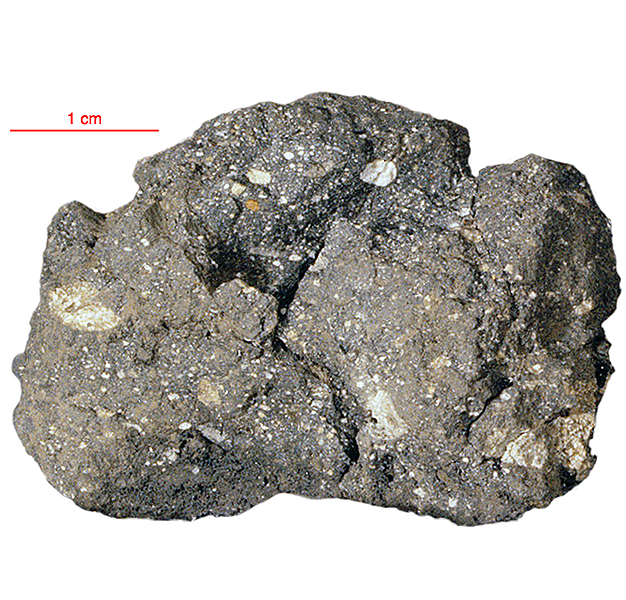
Fact sheet
Lunar breccias 15288 and 15289 are similar regolith breccias. They are relatively coherent with glass-cemented matrix and have abundant glass particles, beads and devitrified glass objects cemented by a glass matrix. Rotation 1 shows a fragment of olivine and a mustard-yellow glass bead. Rotation 2 shows a very pale green teardrop-shaped glass bead, a fragment of plagioclase feldspar and a relatively large, irregularly-shaped, partially devitrified, glass fragment.
The sample weighed 24.1 grams before analysis and has not been dated.
Further details of this and other Apollo samples are here: http://curator.jsc.nasa.gov/lunar/
The Apollo 15 landing site was in the Apennine Highlands, and close to Hadley Rille — a long, narrow winding valley. Approximately 76 kg of lunar material, including soil, rock, core-tube and deep-core samples, were returned to Earth.
This mission was the first flight of the Lunar Roving Vehicle which allowed the astronauts to venture further from the Lunar Module than in previous missions. During three periods of extravehicular activity, or EVA, on July 31st, and August 1st and 2nd, Scott and Irwin completed a record 18 hours, 37 minutes of exploration, travelling 17.5 miles, in the first car that humans had ever driven on the Moon.
Apollo 15 was launched on 26 July 1971.






